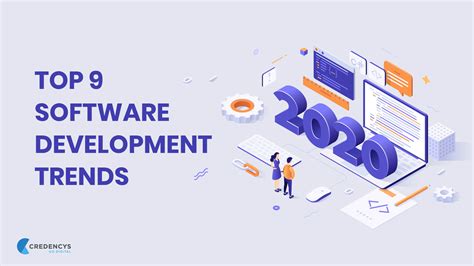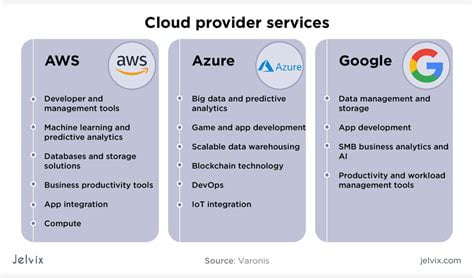Tools for big data analytics are essential in processing, analyzing, and visualizing large data sets. With the increasing amount of data being generated and collected, it is crucial to have the right tools to handle and make sense of the data. In this article, we will discuss the different tools available for big data analytics, their features, and how they can help businesses and organizations.
Apache Hadoop
Overview
Apache Hadoop is an open-source framework that is widely used for big data processing. It is designed to handle large data sets that are distributed across multiple computers. It has two main components, the Hadoop Distributed File System (HDFS) and MapReduce, which allows for distributed processing of large data sets.
Features
Apache Hadoop has several features that make it a popular choice for big data analytics:
- Distributed processing of large data sets
- Fault-tolerant and reliable
- Scalable
- Open-source
- Supports a variety of programming languages
Use Cases
Apache Hadoop is widely used in various industries, including healthcare, finance, and retail. It is used for:
- Processing and analyzing large amounts of data
- Data warehousing and ETL (extract, transform, load) processes
- Machine learning and predictive analytics
Apache Spark
Overview
Apache Spark is an open-source big data processing framework that is designed for speed, ease of use, and flexibility. It is built on top of the Hadoop Distributed File System (HDFS) and can run on top of Hadoop or as a standalone cluster.
Features
Apache Spark has several features that make it a popular choice for big data analytics:
- Fast processing times
- Support for in-memory processing
- Flexible data processing
- Support for a variety of data sources
- Open-source
Use Cases
Apache Spark is widely used in various industries, including healthcare, finance, and retail. It is used for:
- Data processing and ETL (extract, transform, load) processes
- Machine learning and predictive analytics
- Real-time processing and streaming
Tableau
Overview
Tableau is a data visualization tool that is designed to help businesses and organizations make sense of their data. It allows users to create interactive dashboards and visualizations that can be shared and accessed by others.
Features
Tableau has several features that make it a popular choice for data visualization:
- Easy-to-use drag-and-drop interface
- Support for a variety of data sources
- Interactive dashboards and visualizations
- Real-time data analysis
- Collaboration and sharing features
Use Cases
Tableau is widely used in various industries, including healthcare, finance, and retail. It is used for:
- Data visualization and reporting
- Business intelligence and analytics
- Real-time monitoring and analysis
Amazon Web Services (AWS)
Overview
Amazon Web Services (AWS) is a cloud computing platform that provides a variety of services for big data analytics. It offers a range of services for storage, processing, and analysis of large data sets.
Features
AWS has several features that make it a popular choice for big data analytics:
- Scalable and reliable
- Flexible pricing and pay-as-you-go model
- Support for a variety of programming languages and tools
- Security and compliance features
Use Cases
AWS is widely used in various industries, including healthcare, finance, and retail. It is used for:
- Data storage and processing
- Real-time data analysis and streaming
- Machine learning and predictive analytics
Microsoft Azure
Overview
Microsoft Azure is a cloud computing platform that provides a variety of services for big data analytics. It offers a range of services for storage, processing, and analysis of large data sets.
Features
Azure has several features that make it a popular choice for big data analytics:
- Scalable and reliable
- Flexible pricing and pay-as-you-go model
- Support for a variety of programming languages and tools
- Security and compliance features
Use Cases
Azure is widely used in various industries, including healthcare, finance, and retail. It is used for:
- Data storage and processing
- Real-time data analysis and streaming
- Machine learning and predictive analytics
Google Cloud Platform (GCP)
Overview
Google Cloud Platform (GCP) is a cloud computing platform that provides a variety of services for big data analytics. It offers a range of services for storage, processing, and analysis of large data sets.
Features
GCP has several features that make it a popular choice for big data analytics:
- Scalable and reliable
- Flexible pricing and pay-as-you-go model
- Support for a variety of programming languages and tools
- Security and compliance features
Use Cases
GCP is widely used in various industries, including healthcare, finance, and retail. It is used for:
- Data storage and processing
- Real-time data analysis and streaming
- Machine learning and predictive analytics
FAQ
What are the benefits of using big data analytics tools?
Big data analytics tools help businesses and organizations make sense of their data. They allow for the processing, analysis, and visualization of large data sets, which can provide insights and improve decision-making.
What industries use big data analytics tools?
Big data analytics tools are used in various industries, including healthcare, finance, retail, and manufacturing. They can be used for a range of applications, such as data warehousing, machine learning, and predictive analytics.
What are some popular big data analytics tools?
Some popular big data analytics tools include Apache Hadoop, Apache Spark, Tableau, Amazon Web Services (AWS), Microsoft Azure, and Google Cloud Platform (GCP).
What are the features of big data analytics tools?
Big data analytics tools have several features that make them useful for processing, analyzing, and visualizing large data sets. These features may include scalability, reliability, flexibility, support for a variety of programming languages and tools, and security and compliance features.
How are big data analytics tools used?
Big data analytics tools are used to process, analyze, and visualize large data sets. They can be used for a range of applications, such as data warehousing, machine learning, and predictive analytics. They are widely used in various industries, including healthcare, finance, retail, and manufacturing.
What are the benefits of cloud-based big data analytics tools?
Cloud-based big data analytics tools offer several benefits, such as scalability, reliability, and flexibility. They can be accessed from anywhere with an internet connection, which makes them ideal for remote teams and distributed workforces. They also offer a pay-as-you-go model, which can help businesses and organizations save on costs.
What are the security considerations when using big data analytics tools?
Security is an important consideration when using big data analytics tools. It is important to ensure that data is protected from unauthorized access, and that compliance requirements are met. Cloud-based big data analytics tools may offer built-in security features, but it is important to review and understand these features to ensure that they meet your organization’s security requirements.
 Eltupe Technology And Software Updates
Eltupe Technology And Software Updates



